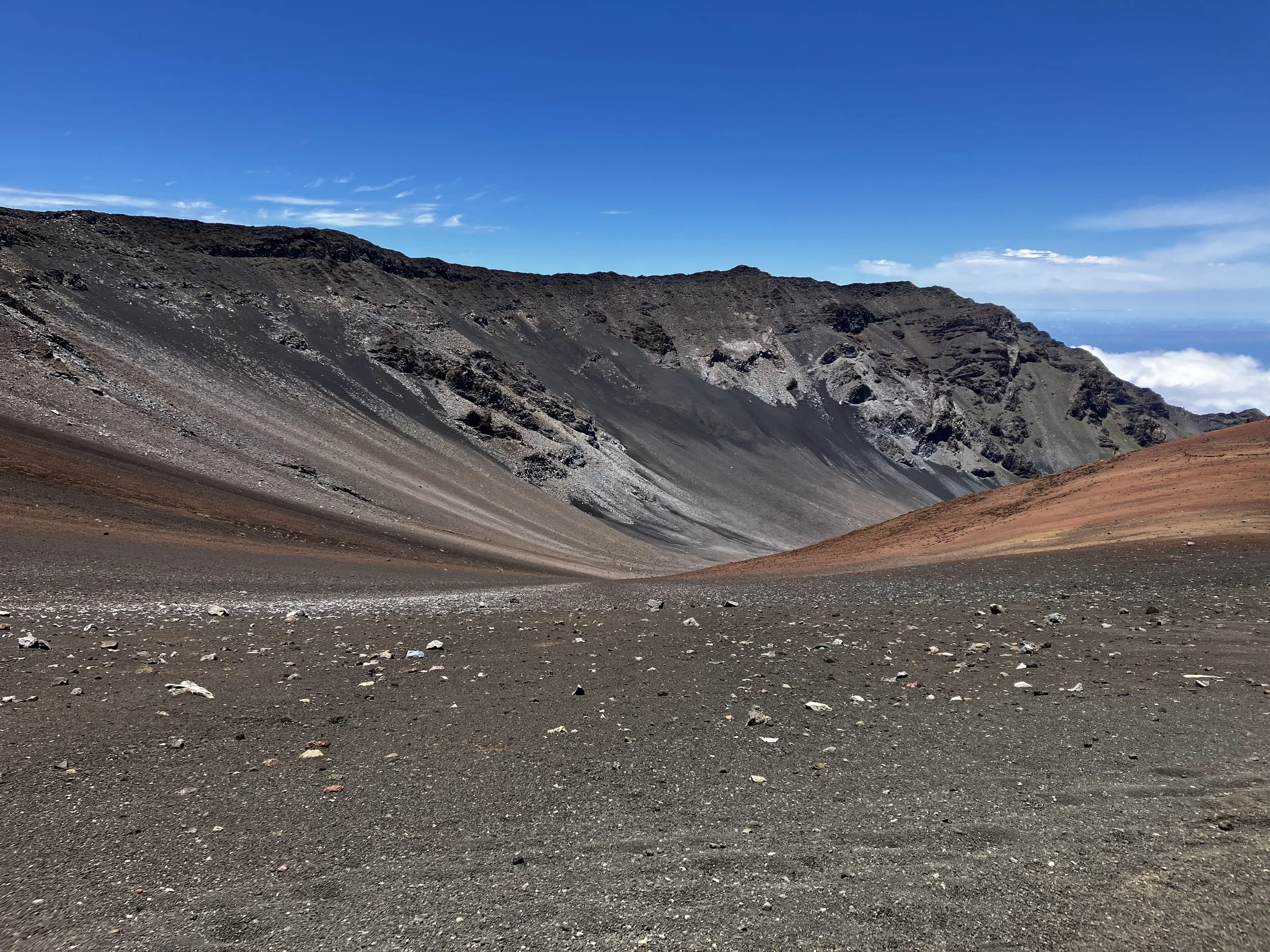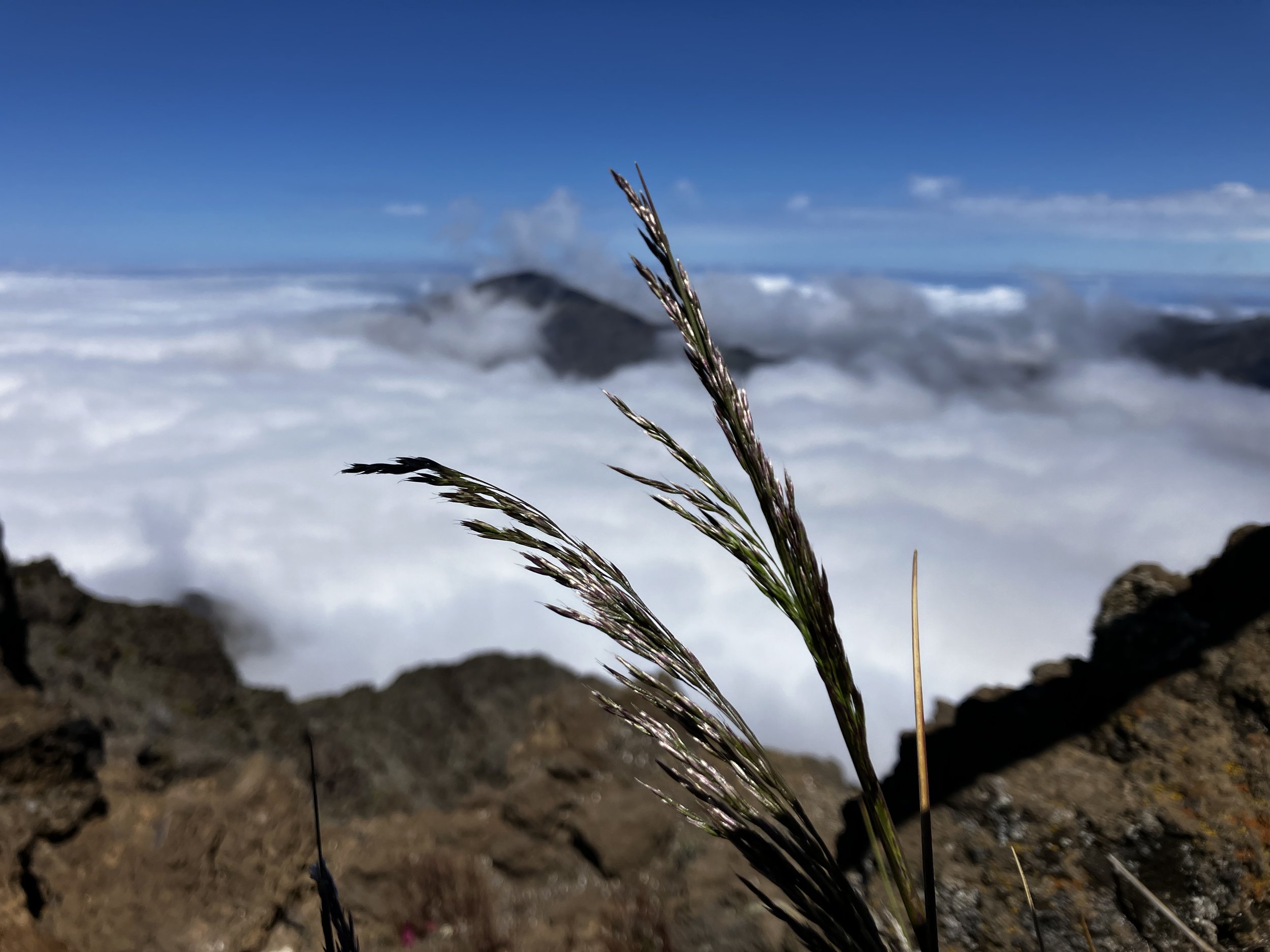Maui, Hawai'i (Day Six): Haleakala National Park & 'Iao Valley State Monument
If you missed days four and five of our trip to Hawai’i, go read that post first!
Today was our big hiking day on Maui and one of the days I was most excited for on Maui. Haleakalā National Park is named for the dormant volcano that last erupted between 1480 and 1600 and rises 10,023 feet above sea level. Haleakalā means “house of the sun” in Hawaiian, and this name is derived from the legend that says the demigod Maui imprisoned the sun here in order to lengthen the day to provide people more time to dry cloth and grow food.
The park is divided into two regions: the summit area and the Kipahulu region, a fragile rainforest valley that can only be accessed by driving hours down the coast to a separate entrance. If we go back to Maui, the hikes in the Kipahulu district are at the top of my list! The most popular activity in the summit region of the park is to see either sunrise or sunset from the highest point. However, we had already made dinner reservations at one of our most anticipated restaurants, so sunset was out, and I didn’t realize when initially planning that as of April 2021, you need reservations (which begin 60 days in advance) to drive up at sunrise. If I hadn’t been pregnant, we could have booked a group bike tour at sunrise to get around this (no bike riding while pregnant was a rule I wasn’t aware of until actually getting pregnant), but as it was, we had to settle for entering the park at its normal opening time.
Be aware that the roads are winding, narrow, and peppered with cyclists as you make your way up the volcano. Drive slowly and enjoy the views as you rise above the clouds.
Halemau‘u Trail (2.2 Miles Total, out and back)
Our first hike was through Hawaiian native shrubland. The trail takes you down to a crater viewpoint, and if you keep hiking past the viewpoint for another mile, you’ll reach the crater floor. Unfortunately, as you can see, we didn’t have much of a view of the crater. One of the drawbacks to the extreme elevation here is that the clouds often roll in as you’re hiking, and this is one reason why sunrise is so popular, as the clouds haven’t had a chance to form yet. The high elevation also leads to varied temperatures (we learned our lesson after Volcanoes and brought layers!) and increased risk of sunburn.
Keonehe‘ehe‘e - Sliding Sands TraiL (11 Miles, Point-to-Point)
The second trail we did was much more strenuous. The Sliding Sands trail takes you across and down into the Haleakala crater (and if you hike it long enough, it eventually merges with the Halemau'u trail, meaning you can make it point-to-point if you have two cars or use a shuttle). There is no shade, and it’s important to remember that the higher elevation might make you more dehydrated and hike at a slower pace. Still, the sweeping extraterrestrial views were worth it (and if you’re a Lord of the Rings fan, there’s one area that looks ~ just ~ like Mordor where Sam slides down towards the mercenary army and gets stuck in the rocks).
OverlookS
We drove up to the summit and visited the overlook there, as well as the Leleiwi Overlook, which is a short .3-mile, out and back trail that provides a different perspective on the crater. This is also where we got some good views of the Haleakala silversword (Argyroxiphium sandwicense subsp. macrocephalum), one of the few plants that can survive on the desert cinder slopes of the crater. They live between 3 and 90 years or more and belong to a class of plants that send up death blooms. This means they flower only once, then die afterwards, their seeds spread from their dried flower stalk by the wind.
ʻĪAO VALLEY STATE MONUMENT
On our drive back to the hotel to change for dinner after a sweaty day of hiking, this park wasn’t far out of our way. Like many state parks in Hawai’i, it requires reservations for non-residents. It’s nestled in a lush rainforest, wildly green and cut through by rocky river (in which many people were swimming and exploring!). The park is the site of the battle of Kepaniwai where the forces of Kamehameha I conquered the Maui army in 1790 in an effort to unite the islands. The main feature of the park is Kuka‘emoku, or the ʻIao Needle, a volcanic spire created by erosional forces that rises 1200 feet from the valley floor. The overlook can be accessed via a short paved 0.6 mile walk, and we also meandered through the small botanical garden, which highlights plants like taro that were brought by native Hawaiians to the valley when it was settled.
Dinner at Cafe O’Lei At the Mill House
We ended our day with dinner at Cafe O’Lei At the Mill House. The first Cafe O’Lei opened in 1997, and it has since expanded to several family-owned restaurants across Maui that focus on fresh, local dishes. The glorification of the plantation setting did not seem to be addressed at all by the restaurant, but the food was my second favorite of the trip. We got ahi nachos as an appetizer, and I ordered the swordfish while Ryan got the braised short ribs as the mains. The prices were also the most reasonable (around $30 for mains) of the “fancier” restaurants we went to on this trip, so combined with the food quality, this is a must-return restaurant for me.
Thanks for reading!
Up Next: Road to Hana























